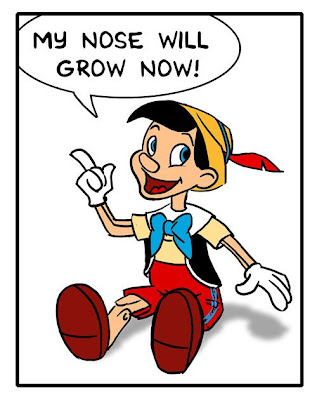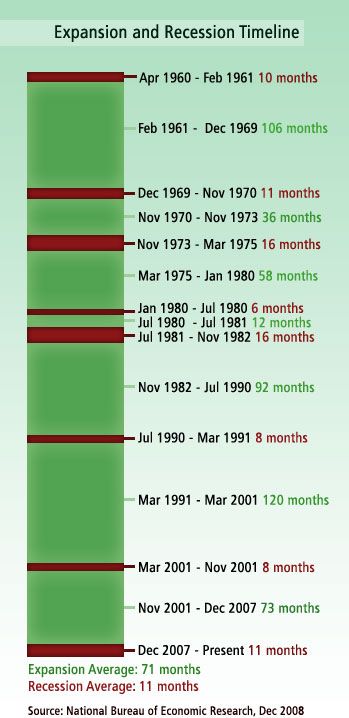Written by Jim Hu
 Record layoffs! Consumer confidence is in the tank! The Dow is trading at its lowest level since 1997!
Record layoffs! Consumer confidence is in the tank! The Dow is trading at its lowest level since 1997!
Scared yet? It seems like everything we read about the economy is either bad or getting worse. The measurements of economic health reveal a patient that requires a stint in the I.C.U. and some time to heal. Luckily, the prognosis isn’t terminal. The American economy is resilient, and since the 1960’s economic growth phases have dwarfed periods of recessions. So if you believe in history, what goes down eventually goes up. The big question is when.
“I think we’ve got at least another 12 months to go,” says Jim Howell, an economics professor at Stanford University’s Graduate School of Business. “If we finish by the end of 2010, that would be a good outcome.”
The problem and solution for the economy revolves around lending and spending. Lending is the lifeblood of the economy, and today the credit markets have slowed due to fears that borrowers won’t pay them back. Without credit, businesses cut back on spending and lay-off workers. Consumers who lose their paycheck stop shopping, forego buying new cars and put their vacations on hold.
Stopping this cycle involves some intervention and some psychological assurances. Forces such as the $787 billion stimulus package are attempts to get the economy flowing again. But the turnaround can’t happen until businesses and consumers feel confident enough to spend.
“When people get a better feeling that we’ve hit bottom… then they’ll change their behavior slowly,” says Howell.
In the meantime, Howell is looking for signs that we’re on the road to recovery. While that day may not arrive for many months, here are his five leading indicators:
1. Bank nationalization
Over the past few weeks, Howell has “reluctantly” endorsed bank nationalization as the solution to thaw out the credit market. He’s not a fan of nationalization, but he does believe drastic measures are needed to fix the system. Before you jump to conclusions and call Howell a socialist, remember that he sees bank nationalization as a temporary and necessary solution not a permanent panacea to the problems of capitalism.
“I want government to take over the banks and throw out all the bankers,” says Howell. “Get rid of all the bad loans and clean up the banks. Then sell them to people who meet some criteria about being reasonably honest.”
2. Confidence in the stock market
Right now the bears are leading the pack and the bulls are on the retreat. Investors are licking their wounds and are skittish to bet on the market. When big investors restore their confidence in the market, you can bet that’s an indicator the tide is turning.
“If you see people with lots of money beginning to dabble in the stock market again, that’s a good sign.”
3. Small businesses
Think small. While lots of attention is focused on large industries such as the automotive industry or the retail sector during a recession, it is actually the viability of small business that can be one of the most important barometers of the health of the overall economy. Just check out main street. Are local businesses closing down? Is your favorite restaurant struggling to fill its tables? A turnaround may be happening “when you see them beginning to pull down their ‘for sale’ signs and begin to advertise,” says Howell.
4. Jobs for college graduates
Yes, unemployment rates are the highest they’ve been in 15 years and every day brings news of another company laying off workers. But the real test of the strength of the job market is whether businesses are recruiting college graduates into their first job. When that happens, you’ll know that they have moved beyond survival mode and are investing in long-term growth.
5. Value of the dollar
How’s the dollar doing against foreign currencies? If it goes up, it probably means the world is beginning to believe that our economy is changing for the better. And if they believe it, then we should too. The world markets are not always right, but “they’re probably right four out of six,” Howell says.
For more of Jim Hu’s writing, visit gloomtoboom
One clue to the cyclical nature of boom and bust can be found in this chart, which indicates how long previous recessions have lasted. While no one is suggesting we just wait it out and strong measures are clearly indicated, we can all take some comfort in the knowledge that time is on our side when it comes to ending the recession.

Your chart is a load of cr*p. Where the hell did you get it?
Dies ist ein gro?er Ort. Ich m?chte hier noch einmal.
The source is listed bra